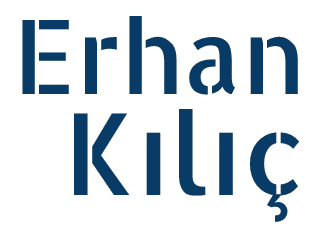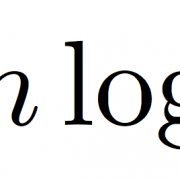Understanding the Role of the Leaf Nodes in Decision Trees
Decision trees are a popular and versatile machine learning algorithm used for both classification and regression tasks. They provide an intuitive way to make decisions based on input features, making them a valuable tool in various domains such as finance, healthcare, and natural language processing. To truly grasp the power of decision trees, it’s essential to understand the role of their leaf nodes, also known as terminal nodes or leaves.
In this article, you will delve deep into the inner workings of decision tree leaf nodes, exploring their significance, how they make predictions, and their influence on the overall tree structure. We’ll also provide code examples in Python using the scikit-learn library to help illustrate key concepts.
Basics of Decision Trees
Before we dive into leaf nodes, let’s briefly review the fundamentals of decision trees. A decision tree is a tree-like structure where each internal node represents a decision or a test on an input feature, and each leaf node represents a class label (in classification) or a value (in regression). The goal of a decision tree is to partition the feature space into regions that are as pure as possible with respect to the target variable.
Here’s a simple example of a decision tree for binary classification:
IF Age <= 30 ├── IF Income <= $50K │ ├── Class: Yes │ └── Class: No └── IF Education = Bachelor's ├── Class: No └── Class: Yes
In this tree, the internal nodes contain conditions based on features (e.g., Age, Income, and Education), and the leaf nodes contain the class labels (“Yes” or “No”).
Leaf Nodes: The End Decision Makers
Leaf nodes are the endpoints of a decision tree and play a crucial role in the decision-making process. When a new data point arrives for prediction, it traverses the tree from the root node to a leaf node following the conditions at each internal node. Once it reaches a leaf node, the decision tree assigns the class label or regression value associated with that leaf node to the input data point. This assignment is the final decision made by the decision tree.
Making Predictions with Leaf Nodes
Let’s see how leaf nodes make predictions with a simple example in Python using scikit-learn. We’ll use a synthetic dataset for binary classification.
from sklearn.tree import DecisionTreeClassifier
from sklearn.datasets import make_classification
# Create a synthetic dataset
X, y = make_classification(n_samples=100, n_features=2, random_state=42)
# Train a decision tree classifier
clf = DecisionTreeClassifier(random_state=42)
clf.fit(X, y)
# Sample input data for prediction
new_data = [[-0.5, 1.5]]
# Predict the class label for the new data point
predicted_class = clf.predict(new_data)
print("Predicted Class:", predicted_class[0])
In this code, we create a decision tree classifier and fit it to the synthetic dataset. Then, we provide a new data point (`new_data`) and use the `predict` method to determine the class label assigned by the decision tree. The class label assigned by the leaf node where the data point lands is the final prediction.
Impurity Reduction and Leaf Node Purity
Leaf nodes aim to minimize impurity or uncertainty in classification tasks. Impurity is a measure of how mixed the class labels are within a node. Common impurity measures include Gini impurity and entropy. Decision trees split the data at internal nodes to reduce impurity, and leaf nodes represent regions where impurity is minimized.
A pure leaf node contains only instances of a single class label (Gini impurity or entropy is 0). In contrast, an impure leaf node contains a mix of class labels, indicating uncertainty. Decision trees strive to create pure leaf nodes as they represent confident predictions.
Role of Leaf Nodes in Tree Structure
The structure of a decision tree heavily depends on the placement and organization of its leaf nodes. Leaf nodes influence various aspects of the tree, including its depth, complexity, and interpretability.
Depth and Complexity
The depth of a decision tree is determined by the number of levels of nodes from the root to the deepest leaf. When leaf nodes are placed closer to the root, the tree tends to be shallow and simple. Conversely, if leaf nodes are deep within the tree, it can lead to a deep and complex tree structure.
Balancing the depth and complexity of a decision tree is essential to avoid overfitting. Overfitting occurs when the tree captures noise in the training data, making it perform poorly on unseen data. Pruning techniques and controlling the maximum depth of the tree can help prevent overfitting and create more generalizable models.
Interpretability
Decision trees are prized for their interpretability, which makes them valuable in applications where understanding the model’s decisions is essential. Leaf nodes play a vital role in achieving this interpretability. Each leaf node corresponds to a specific decision or prediction, which can be easily explained in human terms.
By inspecting the conditions leading to a leaf node, domain experts can gain valuable insights into why a particular decision was made. For example, in a decision tree used for loan approval, a leaf node might indicate that a loan was approved because the applicant’s income was above a certain threshold.
Characteristics of Leaf Nodes
- Pure Leaf Nodes: A leaf node is considered pure if all the training samples that reach it belong to the same class (in classification) or have the same target value (in regression). Pure leaf nodes are ideal because they represent clear and confident predictions.
- Impure Leaf Nodes: An impure leaf node contains training samples from multiple classes (in classification) or has a mix of target values (in regression). These nodes represent uncertainty in predictions.
- Majority Class (Classification)**: In classification tasks, the prediction made at a leaf node is typically the majority class of the training samples that reached that node. For example, if 80% of the samples belong to class A and 20% to class B, the leaf node predicts class A.
- Mean Value (Regression)**: In regression tasks, the prediction at a leaf node is usually the mean (average) of the target values of the training samples that reached that node.
Now, let’s illustrate these concepts with some code examples using Python and scikit-learn.
Code Examples
Classification Example
from sklearn.datasets import load_iris from sklearn.tree import DecisionTreeClassifier # Load the Iris dataset data = load_iris() X, y = data.data, data.target # Create a decision tree classifier clf = DecisionTreeClassifier() # Fit the classifier to the data clf.fit(X, y) # Visualize the decision tree (optional) import matplotlib.pyplot as plt from sklearn.tree import plot_tree plt.figure(figsize=(12, 6)) plot_tree(clf, filled=True, feature_names=data.feature_names, class_names=data.target_names) plt.show()
In this classification example, we create a decision tree classifier using the Iris dataset. The leaf nodes of the resulting tree make predictions based on the majority class of the training samples that reach them.
Regression Example
from sklearn.datasets import load_boston
from sklearn.tree import DecisionTreeRegressor
# Load the Boston Housing dataset data = load_boston() X, y = data.data, data.target # Create a decision tree regressor reg = DecisionTreeRegressor() # Fit the regressor to the data reg.fit(X, y) # Visualize the decision tree (optional) plt.figure(figsize=(12, 6)) plot_tree(reg, filled=True, feature_names=data.feature_names) plt.show()
In this regression example, we create a decision tree regressor using the Boston Housing dataset. The leaf nodes of the resulting tree make predictions based on the mean value of the target values of the training samples that reach them.
Pruning to Optimize Leaf Nodes
Pruning is a technique used to optimize the structure of decision trees by removing nodes that do not contribute significantly to improving predictive performance. Pruning helps in simplifying the tree and avoiding overfitting.
One of the common pruning methods is cost complexity pruning, also known as minimal cost complexity pruning or alpha pruning. In this technique, a hyperparameter called alpha controls the amount of pruning applied to the tree. Smaller values of alpha lead to more aggressive pruning, resulting in simpler trees with fewer leaf nodes.
Let’s see how pruning affects the tree structure in practice with scikit-learn:
from sklearn.tree import DecisionTreeClassifier # Create a decision tree classifier with alpha pruning clf_pruned = DecisionTreeClassifier(random_state=42, ccp_alpha=0.025) clf_pruned.fit(X, y)
In this code, we create a decision tree classifier with alpha pruning by setting the `ccp_alpha` hyperparameter to a non-zero value. This encourages the algorithm to prune the tree during training, resulting in a simplified tree structure with fewer leaf nodes.
Conclusion
Leaf nodes are the final decision-makers in decision trees, determining the class labels or regression values assigned to input data points. They play a critical role in minimizing impurity, influencing tree depth and complexity, and enhancing the interpretability of the model.
Understanding the role of leaf nodes is essential for effectively working with decision trees, whether you’re building, interpreting, or optimizing them. By grasping the significance of these nodes, you can harness the power of decision trees in various machine-learning applications while ensuring their robustness and interpretability.







